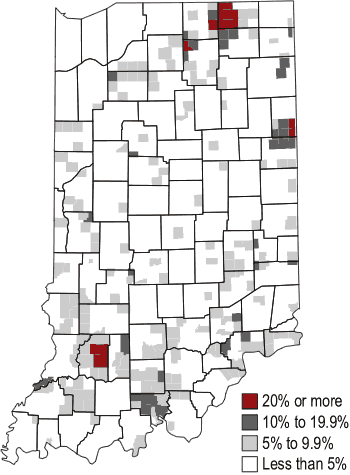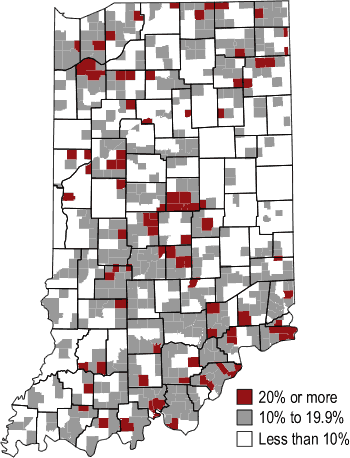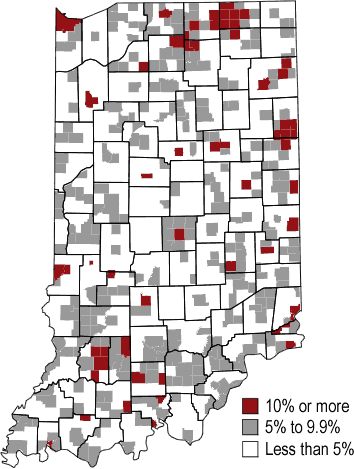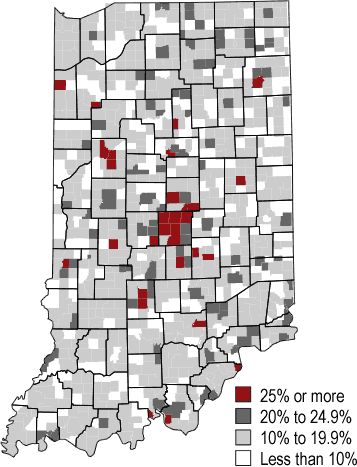Long Form Data Fill Out Census 2000 Portrait
Indiana Business Research Center, Kelley School of Business, Indiana University
In four small clusters of townships throughout the state, at least one in five households has no telephone service. These areas are largely populated by Amish families (see Figure 1).
Figure 1
Households with No Telephone Service
Click for Larger Image
Several suburban townships ringing Indianapolis experienced strong residential construction activity from 1995 to 2000, with 20 percent or more of the housing stock built in that period (see Figure 2).
Figure 2
Percent of Housing Units Built 1995 or Later
Click for Larger Image
In an odd mix of townships, at least one in 10 households had no vehicles available. In Amish communities, college towns, and urbanized townships in Evansville, Indianapolis, and northern Lake County, 10 percent of households rely on other modes of transportation (see Figure 3).
Figure 3
Percent of Households with No Vehicles Available
Click for Larger Image
In six of nine Marion County townships, as well as some suburban areas and university communities, at least 25 percent of household heads had moved within five quarters of Census Day (April 1, 2000) (see Figure 4).







